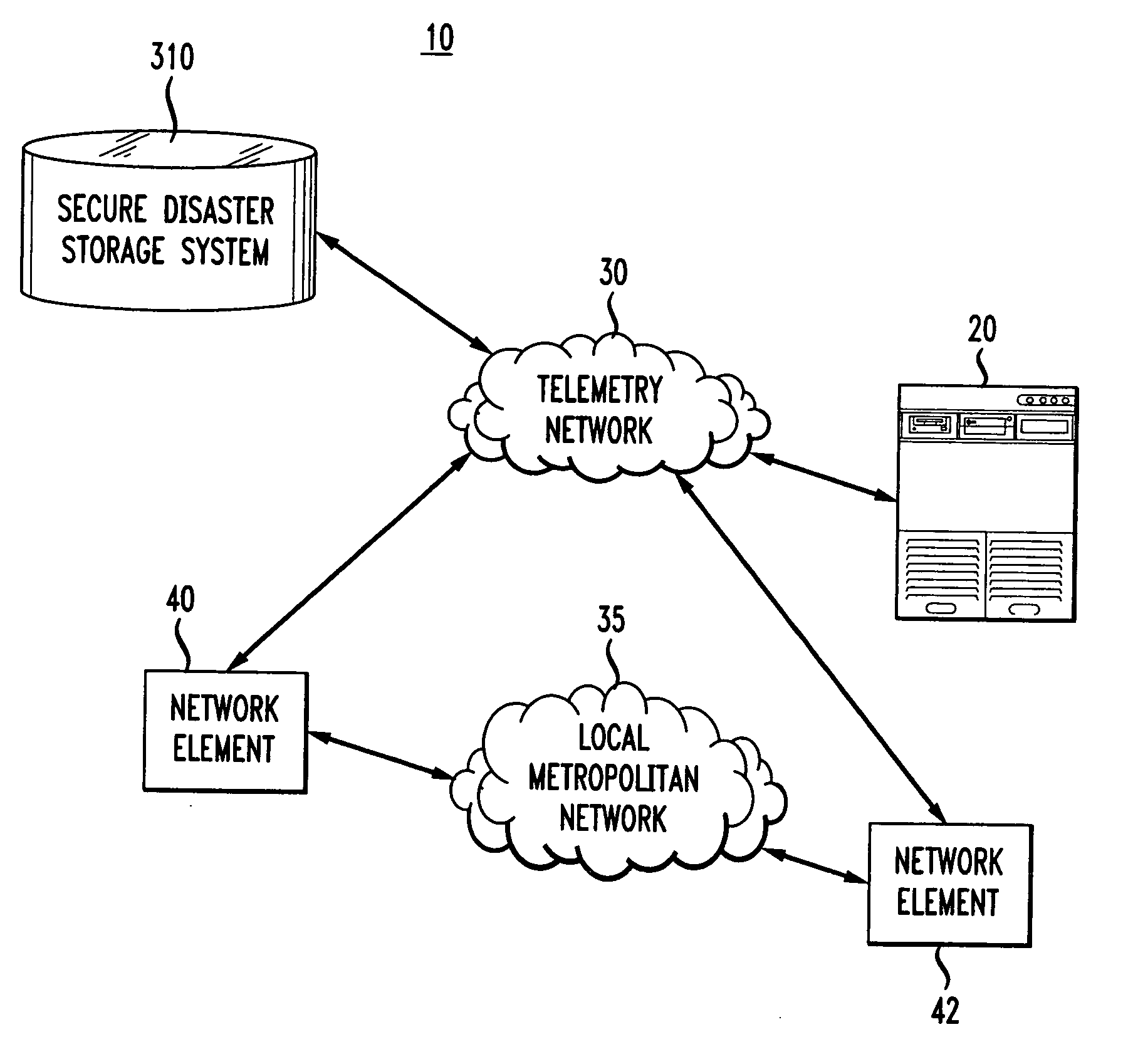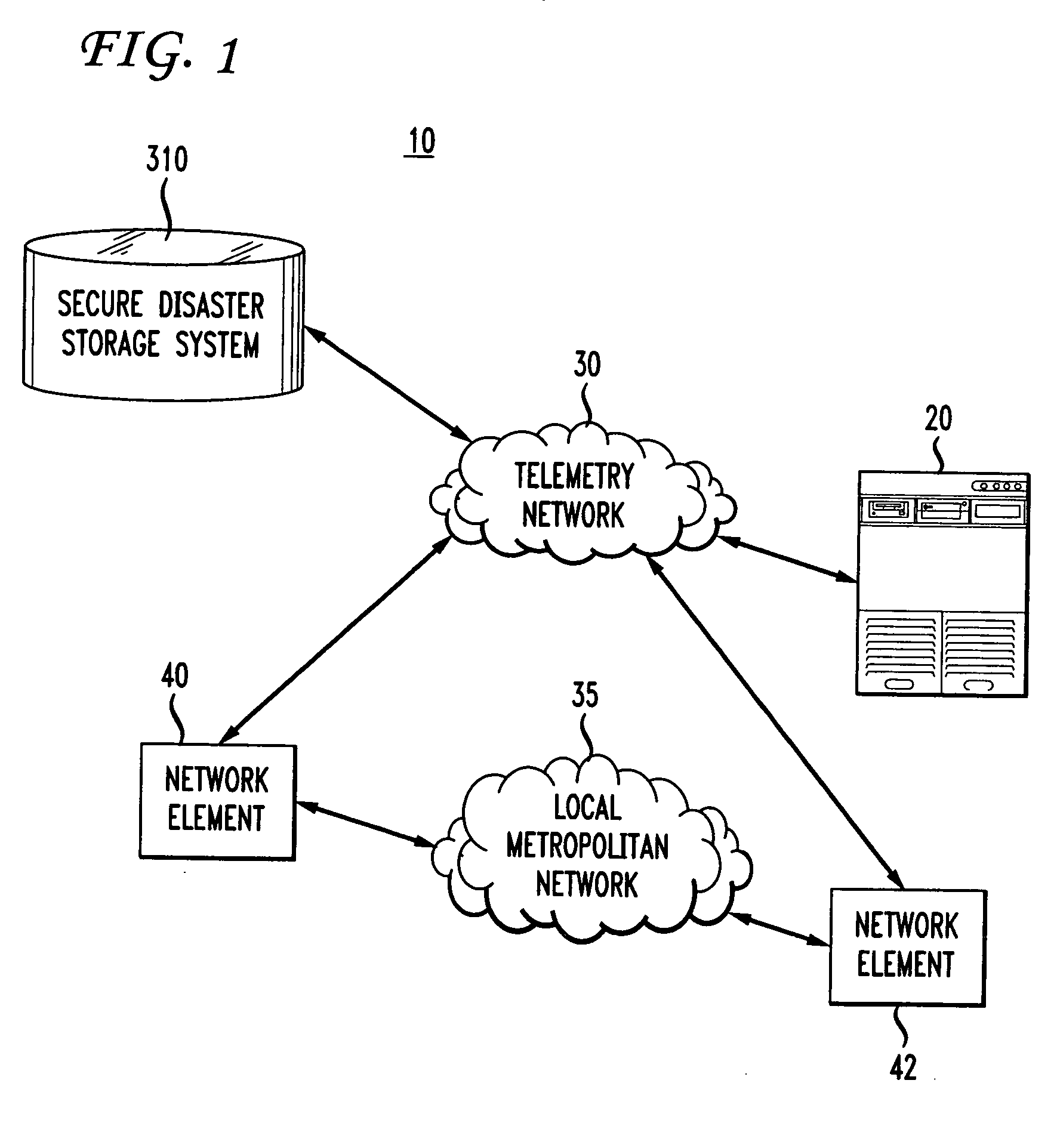Concept of zero-dense wave division multiplex disaster recovery process
a disaster recovery and dense wave technology, applied in the field of telecommunication systems, can solve the problems of multiple network elements, damage or destruction, telecommunication network elements may fail, etc., and achieve the effect of eliminating the reliance on backup data, ensuring the ability to recover quickly from natural or man-made disasters, and reliably restoring service and business operations
- Summary
- Abstract
- Description
- Claims
- Application Information
AI Technical Summary
Benefits of technology
Problems solved by technology
Method used
Image
Examples
Embodiment Construction
[0023] The following detailed description is divided into sub-sections to assist the reader. The sub-sections include: Telecommunication Environment; Disaster Backup Process Flow; Disaster Restoration Flow; Concept of Zero Tools; Disaster Backup Tool; and Disaster Restoration Tool.
[0024] Features of the present invention generally relate to a system and method of disaster preparedness and restoration of service of damaged or destroyed network elements in a telecommunication environment. New systems are provided for disaster preparedness and restoration applications. To facilitate these beneficial and novel features, the present invention may use a novel underlying communication system. Accordingly, the immediate discussion will begin with an explanation of the elements and features of one or more embodiments of this novel underlying system. Unless otherwise indicated by the appended claims, the present invention is not limited to the preferred embodiments described in this section ...
PUM
 Login to View More
Login to View More Abstract
Description
Claims
Application Information
 Login to View More
Login to View More - R&D
- Intellectual Property
- Life Sciences
- Materials
- Tech Scout
- Unparalleled Data Quality
- Higher Quality Content
- 60% Fewer Hallucinations
Browse by: Latest US Patents, China's latest patents, Technical Efficacy Thesaurus, Application Domain, Technology Topic, Popular Technical Reports.
© 2025 PatSnap. All rights reserved.Legal|Privacy policy|Modern Slavery Act Transparency Statement|Sitemap|About US| Contact US: help@patsnap.com



